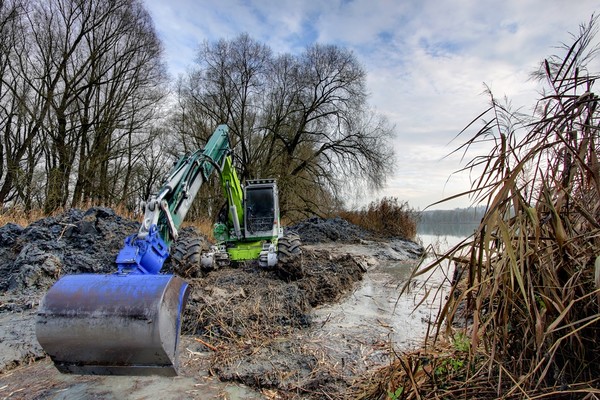
Land maintenance, a challenge for agricultural mechanics
Among the issues put forward in the framework of Agrilevante, the strategies and technologies for preventing environmental risks are particularly important. The conference topics are disruption, fires, and drought, therefore they lead the focus on the more visible disasters, while the exposition premises, devoted to multifunctionality, host dissemination activities and an exhibition of specific machinery
More than 120 thousand hectares ravaged by fires, two billion’s worth euros of damage, eleven Regions that have called for a state of natural disaster to be declared. And yet, sudden floods, whirlwinds, landslides, and mudslides. Summer 2017 gives the snapshot of a country, our country, suffering both from a record-breaking drought, which has destroyed the water supplies of many urban and agricultural areas, and from the burden of an extreme, often unpredictable, weather situation. The conference on "Disruption, fires, droughts: the emergency and the strategies" promoted within the framework the fifth edition of Agrilevante, the biennial exposition dedicated to machinery and technologies for agricultural supply chains organised by FederUnacoma, the Italian Agricultural Machinery Manufacturers Federation, in collaboration with the Levante Trade Fair Institution, and the Apulia Region Agricultural Department. The meeting will be held on Thursday, October 12, at the Puglia Region Hall of the Bari Convention Centre. Some senior representatives of both institutions and university will participate, and it will represent a time to reflect on the aid that agriculture, and particularly multifunctional agricultural activities, can provide for the maintenance of the land. From the ditch, riverbank, and dam cleaning - which are the basic activities to prevent flooding in the event of heavy rainfall - to the maintenance of reservoirs and of conduits which collect and conduct water; from the maintenance of forest areas, with the removal of the exceeding biomass, to the realisation of firebreaks within the woods, farmers can directly contribute to manage the environment protection of the areas they know very well. On the other hand, multifunctional activities already represent a major business opportunity - in Italy, their weight on agricultural GDP is growing - thanks to the systematic funding provided by the second pillar of the common agricultural policy. One of the topics of the meeting is the availability of increasingly specific and effective technologies. The agricultural mechanics industry is, today more than ever, able to offer a range of machines and equipment that can carry out both agricultural and territorial functions. Ditching machines, brush cutters, choppers, front loaders, backhoe loaders, steer loaders, chain saws, telescopic lifters, and other types of mechanical means, including those for collecting, moving, and processing forest biomass, are available on the front loaders market. Within the M.i.A. area, devoted to multifunctionality, there will be a selection of machinery and technologies but, above all, an explanatory exhibition, and a series of meetings, among which the "The hydrogeological instability. Land defense policies for the Apulia Region and intervention strategies" stands out. Apart from Agrilevante, the M.i.A. area is as an integral part of trade fairs such as EIMA International in Bologna and Foggia's Agricultural Fair, and it increasingly focuses on the problem of land maintenance and management. Companies can buy the most up-to-date technologies for these types of intervention also through community and national public funds, primarily the RDP, Rural Development Plans, that finance the purchase of machinery for the large range of possible needed activities in rural environments.








